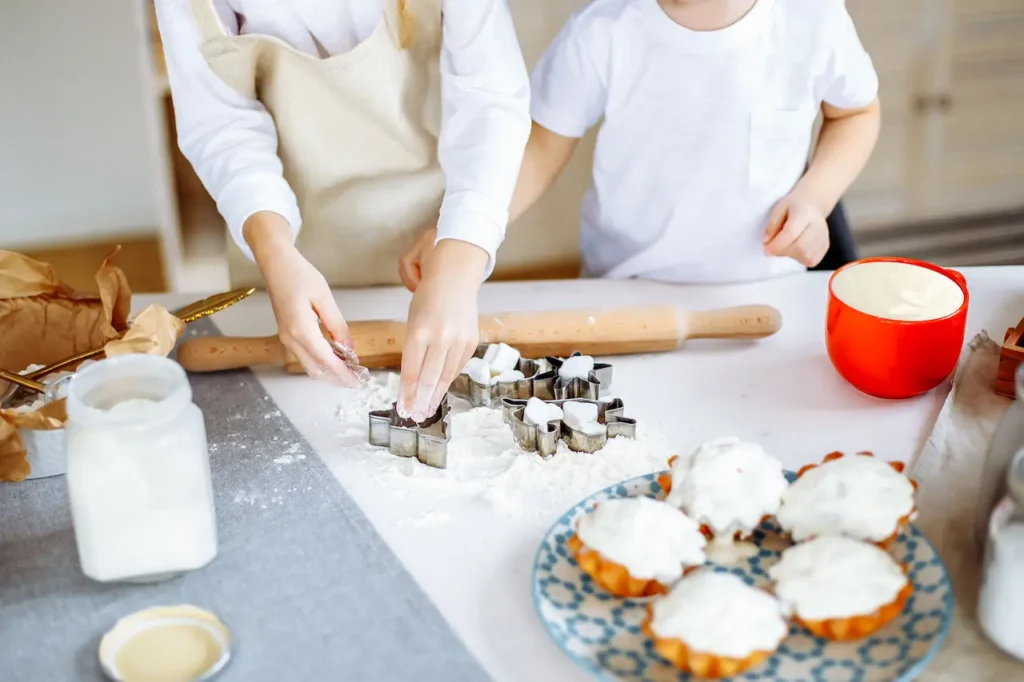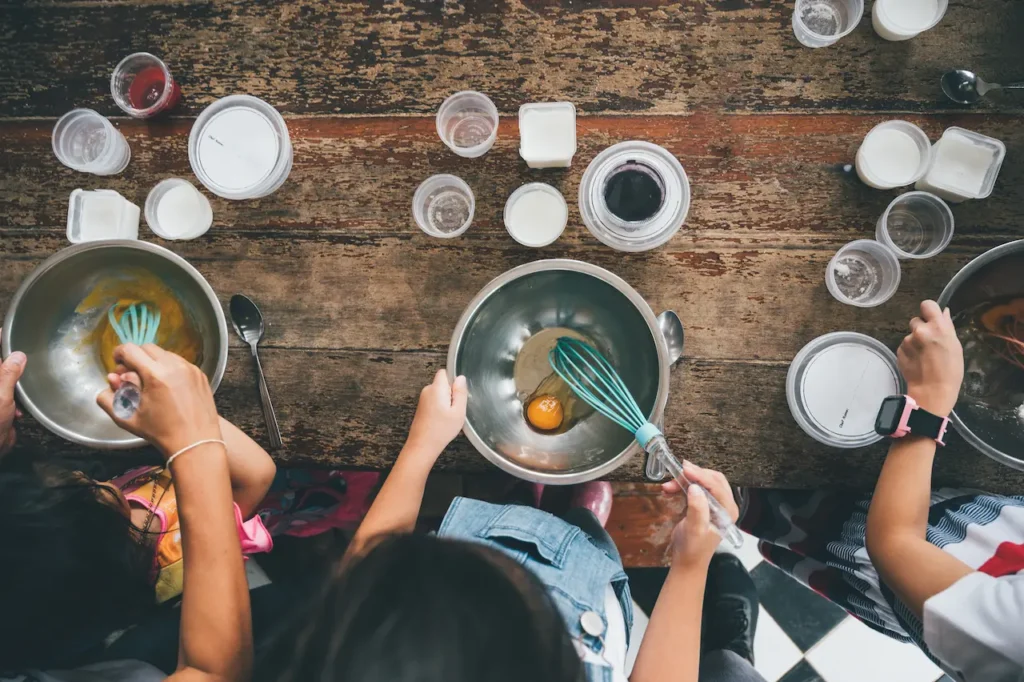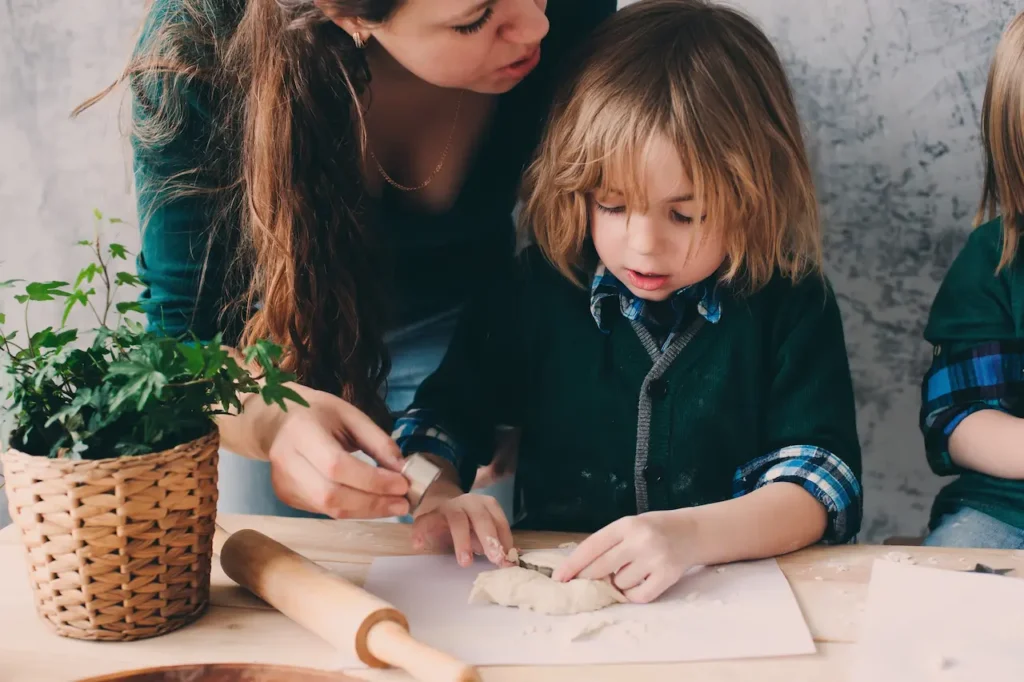How To Teach Kids How To Cook Safely
Fun and Practical Safety Tips for the Kitchen
Teaching children how to cook can be a truly rewarding experience. It’s important to know how to teach kids how to cook safely as you guide them in the kitchen. Not only does it help you bond with your child, but it also equips them with valuable life skills. Whether you have an eager toddler wanting to help or a teenager who’s a bit hesitant to cook, there’s always a place for them in the kitchen.
When Can You Teach Your Kids to Cook?
At any time! The age of children is not a factor when it comes to cooking with them. It’s an activity that’s great for kids at all stages. Not only is it about cooking, but it’s also about encouraging independence, creativity and a feeling of accomplishment. My cooking career began around the age of 10, and I learned valuable lessons from my first kitchen experiments, such as the time I accidentally added too much black pepper into a scalloped potato dish. As time went on, I began to cook for my family, especially when my mother was suffering from migraines. My dad and brothers were very grateful.
No matter your age, cooking is always fun. When kids help prepare meals, they are more likely to like the food on their plates. It’s also a great way to get kids involved in problem-solving and math. Your child’s math instructor may even assign word problems that are based on the recipe!

Teach Your Children to Cook and Reap the Benefits
Invite your children into the kitchen for many different reasons. Even if the evening is chaotic, cooking together can create an enjoyable and positive atmosphere. When I ask my toddler to decide how many potatoes to cook or my teenager to select the right amount of cheese for nachos, it makes them feel involved in a meaningful way.
You can also learn math and science by doing. It’s great to see how classroom skills are applied in real life. For example, watching the heat change food or measuring ingredients is an excellent way to apply what you learn. Making a cake or soup brings numbers to life in a very practical way.
Even if you don’t live in a rural setting, your kitchen can be a place for kids to learn responsibility that will serve them well throughout their lives. Children can gain confidence by helping prepare meals. This will also help them learn how to take care of themselves. Let’s face it: if they can feed themselves, you’ll save time and energy in the future.
Children’s Kitchen Tasks Suitable for Their Age
Parents wonder when they can begin teaching their children specific kitchen tasks and how much trust they should give them. I have compiled a list of tasks for kids based on age and ability. These guidelines will help you teach your child to cook safely and efficiently.
Cooking Activities for Toddlers (Ages 2-4)
Your child will need constant supervision at this age, but they can still help with many simple tasks. Here are some age-appropriate games and activities.
- Setting the table – Toddlers will practice putting forks and knives in the correct places.
- Pressing Lemons– Help the children squeeze lemons to release the juice.
- Matching silverware– This can be done while unloading your dishwasher.
- How to Use the Salad Spinner Toddlers enjoy helping with washing greens.
- Remove Fresh Herb Lea. Let them pull the leaves off stems.
- Stirring Gentle– They can stir things without much force.
- Mashing Potatoes– Mashing with a hand masher can be fun and safe for small hands.

Cooking Tasks for Children Aged 4-5 Years Old
Children can now focus for longer periods and have improved motor skills. This is the perfect age to encourage independence in cooking. They may still require guidance, but this is an ideal time for them to do so. They can do the following tasks:
- Let them stir independently.
- Setting The Table– They can handle utensils, napkins and other items.
- How to Put Away Pots & Pans– They can organize kitchenware once they have been washed.
- Greasing pans– With assistance, they can use a cloth or brush to grease baking trays.
Cooking Tasks for Children Aged 6-7 years old
As children get older, they develop fine motor skills that make it easier for them to take on more complicated tasks. They still need to be closely guided. You can teach your children to:
- Mince & Dice Soft Foods– Teach your children how to safely use a pairing knife to cut soft foods like strawberries and vegetables.
- Peel Potatoes– Teach them how to properly use a vegetable peeler.
- Slice Avocados– They can be used to slice and scoop avocados into guacamole, salads or other dishes.
- Grease Pans — Like the younger group, they can also do this with some help.
- Use the Microplane Zester. They can zest oranges or grate small amounts of cheese.
- Drain Canned Beans. This is an easy task that anyone can perform.
- Pour liquids– They are capable of pouring liquids into measuring cups or mixing dishes.
- Decorate Dishes– Encourage your children to be creative and add toppings or garnishes.
Cooking Tasks for 8-9-year-olds
They can read and follow recipes, which makes them very capable of cooking. They can do a wide range of tasks on their own at this age:
- Use the Pizza Cutter and Can Opener — They are ready for more precise instruments.
- Scooping batter into muffin cups – Let them do the scooping.
- Stand Mixers: They can operate electric mixing machines with supervision.
- Store Leftovers– This is the responsibility of those who are responsible for storing leftovers after meals.
- Pounding Chicken– Have them practice tenderizing meat or chicken for a meal.
- Skewer foods– They can put together kebabs using the appropriate ingredients.
- Wraps and Sandwiches are perfect for lunchtime!
- Use a small knife to chop. They are safe for softer foods such as tomatoes and cucumbers.

Cooking Tasks for 10-12-year-olds
At this age, your child is likely to be able to handle many tasks in the kitchen independently. Even simple meals can be prepared with little supervision. Before letting your child cook on his or her own, make sure that they have mastered the basics, like safe stove usage and proper knife handling. Included in the tasks are:
- Scrambling eggs– With a little guidance, they can cook the eggs on the stove.
- Flipping Pancakes– This breakfast classic can be handled with a little assistance.
- Stove and Oven. With supervision, children can perform basic stove tasks.
Tips for Success
If you create the right atmosphere, cooking with kids can be a wonderful experience. Here are a few tips that will make cooking with children fun for you and them:
Pick the Right Time
Choose a time that is not too busy in the kitchen. Weekends and quieter evenings allow you and your child more time to relax and be patient. You can then focus on the experience instead of rushing.
Get ready for a mes.s
It’s okay to get messy when you cook with your kids! Focus on the fun and embrace the mess. Plan for cleaning up, but don’t forget that the mess will be part of your child’s adventure. It is also a good opportunity to teach them about responsibility.
Safety First
Prioritize safety in the kitchen. To minimize risk, use child-friendly equipment and utensils. Be sure to keep an eye on your children, especially if they are near surfaces that can be hot or objects with sharp edges. Instilling good habits in your child by teaching them kitchen safety is not only a way to protect them, but also to keep them safe.
Celebrate small wins
No matter what the result, take the time to reward and praise your child for their efforts. Every little bit counts, whether they whisk an egg successfully or help measure ingredients. These small wins boost their confidence and can inspire a lifelong love of cooking.
Follow these tips to create a positive experience in the kitchen that promotes creativity, confidence and joy!
Conclusion
It doesn’t matter if your child helps you stir, chop, or set the table. Getting them involved in cooking is an invaluable life lesson. Not only is it about creating delicious food, but also about teaching your child life skills and making memories. Next time you cook, invite your child to help. You’ll both enjoy the meal you create with the right guidance.



